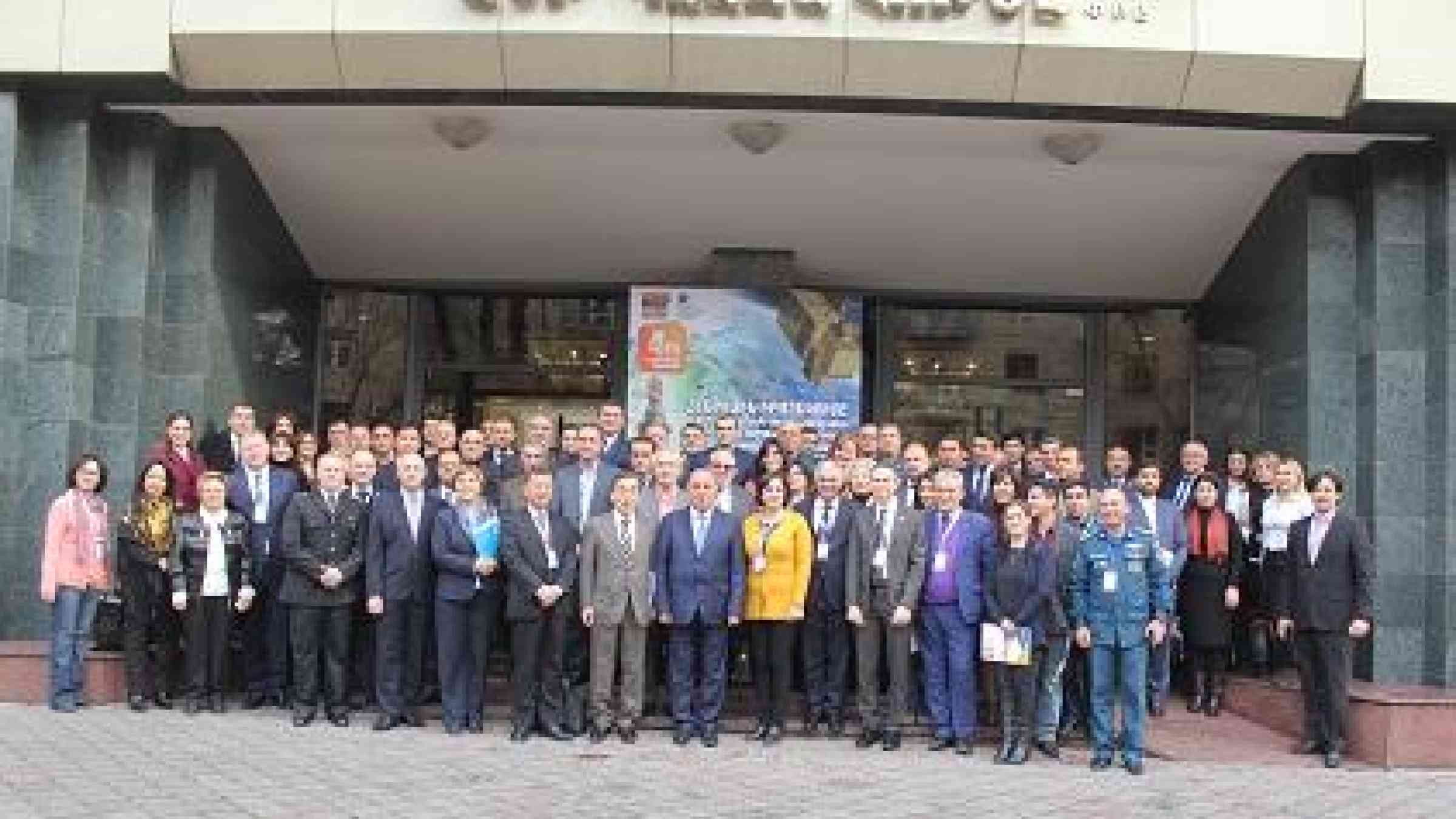Bridging the 'last mile' in risk awareness

YEREVAN, 13 December 2016 – Countries around the world need to bridge gaps in public understanding of disaster risk, otherwise they will keep facing human and economic blows, according to experts at an international conference.
Scores of specialists have gathered this week in the Armenian capital Yerevan to share lessons on connecting the “last mile” between the authorities and the public, at the 4th International Conference on Public Awareness as a Cornerstone of Disaster Risk Reduction and Sustainable Development.
Mr. Amjad Bhatti, Principal Policy Adviser at the Rural Development Policy Institute in Pakistan, underlined the scale of the challenge, saying there were five ways to get it wrong, and one way to get it right.
Efforts will go awry if information is not available, or available but not communicated, or communicated but not understood, or understood but not acted upon, or misunderstood and responded to wrongly.
“But if information leads to awareness, and awareness leads to action, and action leads to prevention, preparedness, response and rehabilitation, that’s the right path,” he said.
Conference host Armenia learned those lessons the hard way, said Mr. Haykaram Mkhitaryan, Deputy Minister of Emergency Situations in his opening address to the two-day conference on Tuesday.
The mountainous country is crisscrossed by fault lines. On 7 December 1988, a 6.8-magnitude earthquake smashed into city of Spitak. The estimated death toll was 50,000, with double that number thought to have been injured.
“The reason for the tragedy that took place 28 years ago was a lack of awareness, and a lack of preparedness,” said Mr. Mkhitaryan.
“Only a population that is aware and informed is able to become resilient. And without an aware population, it’s impossible to imagine risk reduction and sustainable development. Everything starts with risk reduction,” he added.
In 1991, as Armenia won independence from the crumbling Soviet Union, it set up an emergency management administration and has been developing its capacity ever since, focusing on curbing risk.
The Spitak disaster, like the 1985 Mexico earthquake, also triggered a gradual international shift from treating disasters purely as a matter of relief operations to confronting risk head in order to lessen the impact of hazards.
That approach has been most finely-tuned by the Sendai Framework for Disaster Reduction, a global agreement adopted in 2015.
The Sendai Framework, which runs to 2030, has seven targets. It aims to bring about substantial reductions in disaster deaths, the number of affected people and economic losses, plus damage to critical infrastructure and disruption to basic services such as health and educational facilities. It also seeks to increase the number of countries with national and local risk reduction strategies, bolster the capacity of developing countries, and vastly increase coverage by early warning systems.
“Information, communication, public awareness are integral elements of the Sendai Framework,” said Ms. Madhavi Malalgoda Ariyabandu, head of the UN Office for Disaster Risk Reduction’s operations in Central Asia and the South Caucasus.
“It is clear that if we fail to communicate with information about an imminent disaster event in appropriate messaging to those in harm’s way then all the effort to gather the information in the first place is something of a waste,” she said.
Japan provides a powerful case study, thanks to decades of efforts.
“Disaster risk management is a kind of culture of the Japanese people,” said Mr. Hitoshi Baba, Senior Adviser at the Japan International Cooperation Agency.
“Each time we experience a big disaster, we revise the laws and regulations, and apply new technical standards. But the community isn’t just on the receiving end, they also act by themselves,” he added.
The definition of “public” encompasses residents, the administration and the private sector, all of whom have a critical role to play, he said.
One solution is to get the media on board, and Japan is among the countries at the cutting edge.
Public broadcaster NHK is a key link in the early warning chain, said Mr. Kei Oharu, Senior Correspondent in its Current Affairs Division, noting that its messages are fact-based, simple and delivered in a loud, imperative tone.
Mr. Bhatti underlined that it is critical to translate scientific terms – such as earthquake magnitudes or storm categories – into potential impacts on the ground.
And the public needs to understand who should do what in a crisis, he said.
“Public awareness is also about telling people about the roles and responsibilities of government, the media, or the private sector. It’s not just about risk, but also about accountability,” he explained.